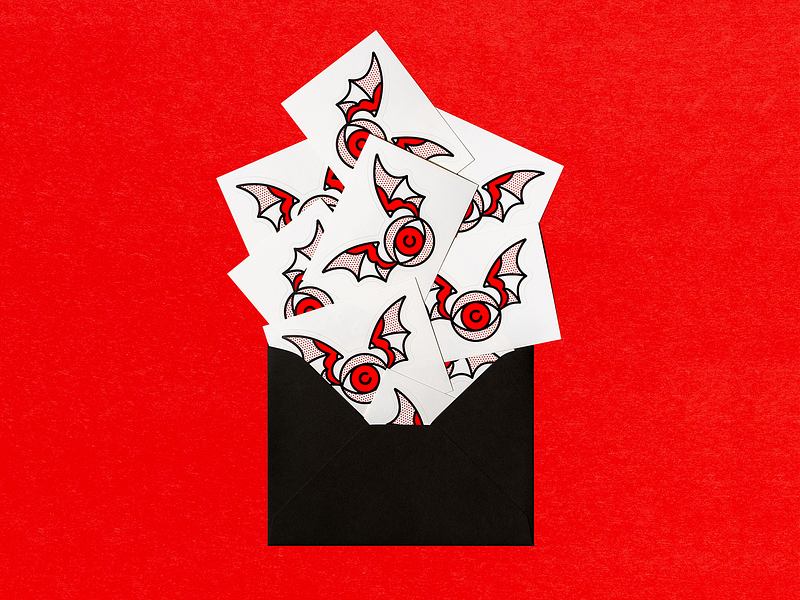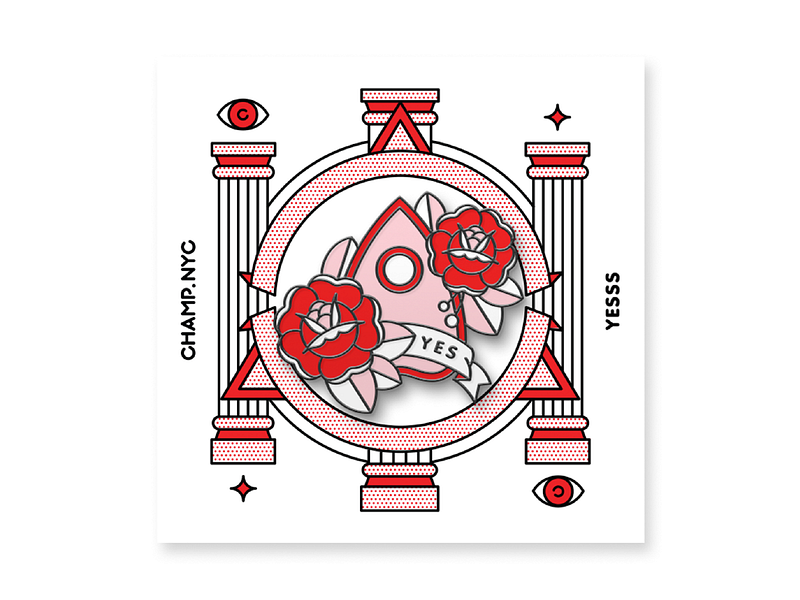Have you ever considered designing and selling physical products? Whether you want to start a side-hustle or a new hobby selling custom merch, there are a few important things you should know to ensure you set yourself up for success.
Today we’re joined by Lisa Champ, a New York City-based designer and illustrator. On top of running her own boutique creative studio, Lisa has been designing and selling limited edition merch since 2015, featuring her illustrations in the form of apparel, stickers, and pins.
Below, Lisa shares her top five tips for designers interested in starting up a side-hustle selling their own custom products. Thank you, Lisa!
1. Introduce yourself to the world before you do anything
When starting any product launch or business, you need to get the word out long before the day you release something. In the case of merch, it’s best to start building a following first. From the perspective of selling merch as a designer, start by building a following as an individual. Let people get to know you and become familiar with your work, your style, your message, and your vendetta before you go make a bunch of stuff.
Figuring out your unique niche, voice, or perspective is important. When you try to appeal to everyone, you might not appeal to anyone. This takes time and persistence. When you decide to make something, talk about it and share it before it’s produced, and continue to do this even after you launch your products.
2. See if there’s interest before you make something
Mockup your product (or a few) and ask people if they would buy it. Instagram Stories is a good place to do this because of their poll sticker. It’s also worth asking if your poll participants have any other feedback after the poll. Sometimes you’ll gather better insight here.
Naturally, you’ll get a lot of conflicting information doing this, but it’s a good way to identify trends of what people want or don’t want. It’s also worth noting a lot of people will say they will buy something, but a portion of them won’t. Be wary of assuming you’ll have 27 sales because 27 people said yes.
3. Calculate production, shipping, & profit to figure out price points
When determining how to price a product, you’ll have to factor in all of your expenses to design, produce, package, advertise, and ship your product. You should also want to make a profit on top of that. Make an Excel spreadsheet (ugh, I know) with a line item for every cost associated with producing the item. For example, if I’m producing pins my sheet might look like this:

To calculate the cost to produce, package, and advertise each pin, divide the production cost by the quantity to find the cost per item. Then, total the cost per item column to find the raw cost of producing the item.
In this scenario, each pin will cost $4.52 to produce, package, and advertise. If I want to make a $5 profit on each pin, I’ll need to sell them for about $10 each. You can choose to build in your postage cost (taking away from your profit), or charge postage on top of the price you’re selling the item for. You might want to include a line item for the time it took you to design the product or other costs associated with running your website.
4. Sell the item as a pre-order before you produce it
This method entails selling a product before sending it to production. To be clear, you should already have a printer or vendor chosen and discussed producing the product with them. That way, you’ll know the production costs and the production time.
It’s important that you’re upfront with your customers, letting them know that they’re purchasing a pre-order item and how long they’ll be waiting before the product is ready to ship. This method is useful for a few reasons:
- To help you gauge how many products to make based on the number of orders you get.
- If your product has a variant (size, color, etc) you’ll know which variants are popular.
- You can use the funds you earn in the pre-order to help pay for the order when you place it.
5. Support other designers who make merch
It’s a small community, and other designers who make merch are not your competitors. Supporting each other is better for everyone. Support isn’t necessarily buying something—it comes in many forms. Here are a few ways you can show your support:
- When they release a new product, share it. Tell your friends.
- Like their posts. Leave a supportive comment or tag someone who might want that item.
- And of course, buy something and then giving them a shout.
There’s a fairly good chance the person who you supported will reciprocate when you release a new product.
About Lisa: Lisa Champ is a designer, illustrator, and creative director living and working in New York City. She is a co-founder of Untitled Era, a boutique creative studio. Lisa is best known for the pop art, traditional tattoo-driven illustrations she creates under the moniker champ.nyc. Since 2015, she has designed and sold limited edition merch featuring her illustrations in the form of apparel, stickers, and pins.
Related Articles
- Jessica Molina’s daily habits for growing a creative side‑hustle
- How this designer turned her online shop into a full-time job
- We found the perfect enamel pins to gift your designer friends
Find more Process stories on our blog Courtside. Have a suggestion? Contact stories@dribbble.com.












